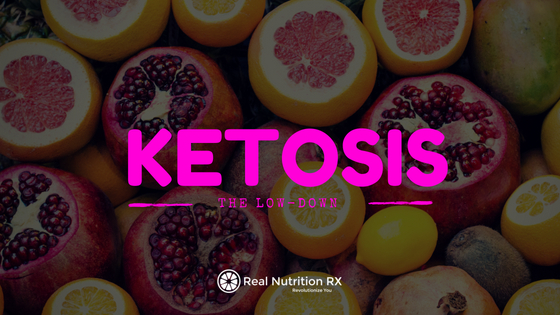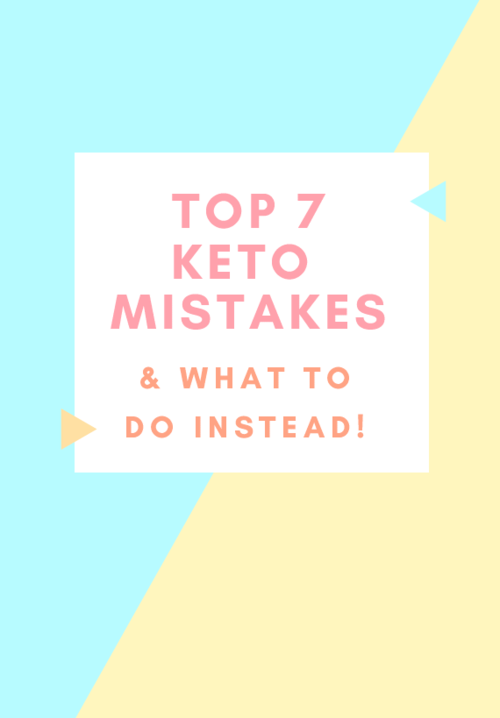
Unless you live under a rock, you’ve probably heard about ‘keto’ or the ketogenic diet.
However, I find that many people are a little confused around the specifics. Keto is an incredibly powerful dietary pattern, and there’s much more to it than just ‘low carb’. So, let’s get into the details!
What Ketosis Is
Entering ketosis is known as flipping the ‘metabolic switch’. Normally, the body gets energy from carbohydrate. This carbohydrate comes from two places:
- Blood glucose
- Stored carbohydrate in the muscles and liver, known as glycogen.
However, when little carbohydrate is consumed in the diet, the body runs out of blood glucose and stored glycogen. This is when the switch flips!
In the absence of carbohydrate stores, the body starts producing energy molecules from fat; these are known as ketones. This metabolic state is known as ‘fat burning mode’ because the body literally switches its metabolic behavior to start converting fat into ketones. These ketones can be used as energy virtually indefinitely, as long as there is body fat and/or dietary fat to use.
How to Achieve Ketosis
So, how do we ‘flip the switch’ to start making ketones? Yes, carbohydrates have to be low, around 5% of calorie intake. However, it’s also critical to increase fat intake, so that there is energy available to make ketones.
Another critical step is to limit protein. Protein can be used to make glucose/carbohydrate, which blocks ketosis. So, protein should be around 20%-30% of energy intake as a baseline. This leaves fat intake to around 70% of daily intake! I’ve seen a lot of people mess this up, and have a horrible experience with keto as a result. You can get more detail about common mistakes from this article I wrote on the topic: Ketogenic Diet Common Mistakes.
Keto Diet Quality
Another important aspect of the ketogenic diet is diet quality. Sorry, a plate of bacon and cheese isn’t going to cut it!
- It’s essential to incorporate enough fiber from low-carb vegetables. Even some low-carb fruit like berries can fit. The plants in your diet also provide important nutrients and phytochemicals.
- Quality fats (rather than processed, inflammatory fats) are also essential. Great fats on keto include coconut, olive, and avocado oil, ghee, grass-fed butter, nuts and nut butters, avocado, and coconut. For some, good quality, full-fat dairy can also provide some of fat intake.
- The same goes for protein – quality is key. Meat, poultry, eggs, and seafood should all be well-sourced. This means organic and grass-fed, free-range, or wild-caught seafood, as applicable.
What Does Keto Actually do for me?
I’m not kidding about this….I keep seeing people trying keto without being sure why they’re doing it. Keto is not right for everyone. There are specific times when keto makes the most sense. Ketogenic diets were first developed for epilepsy control, but they have since been found to provide a variety of other health benefits. Let’s take a look at what the scientific literature shows about ketogenic diets.
Health Benefits of Keto
When people follow a ketogenic diet, they experience the following health benefits. This is even compared to people who are on a traditional weight loss diet (low fat, high carb):
- Loss of body fat, with the preservation of muscle. This is unlike traditional weight loss approaches, in which muscle mass is usually lost.
- Decreased insulin and carbohydrate cravings
- Reduced appetite (improved control of food intake)
- Improved glucose metabolism (decreased insulin resistance),
- Reduced inflammation
- Reduced blood pressure, both systolic and diastolic (improved hypertension)
- Improved cardiovascular health (decreased triglycerides and total and LDL cholesterol)
- Improved tolerance of stress and disease
- Overall improvement of metabolic syndrome (including ‘pre-diabetes’)
- Decreased risk of cardiovascular disease and type 2 diabetes
- Improvement of cognitive function (improved focus and less ‘brain fog’)
- Greater improvement of endurance as a result of strength training
Of note, most of these effects have only been shown for overweight or obese subjects, and some only in animal models. Thus, the body of research on this topic is not complete. An average of 5 kg (11 lbs) was lost in the clinical trials that showed benefits of ketosis. Thus, weight loss may be an important component of the therapeutic benefit. The duration of the successful studies was at least 8 weeks long, so keto should be followed for a minimum of 2 months before expecting significant benefit.
Ketosis Reduces Blood Lipids and Body Fat
Did you notice that blood lipids (i.e. cholesterol) improve on a ketogenic diet? That’s right. Eating fat does not increase the fat in your blood or on your body. Quite the opposite. The leading ketosis researchers believe this fact to be because of the metabolic switch. Remember that ketosis literally buts the body into ‘fat burning mode’. So, your body is using fat for energy instead of storing it in your blood OR on your body.
Ketosis Reduces Inflammation
Another important point here is that ketosis reduces inflammation. There are two primary reasons for this:
- Scientists have found that the primary type of ketone (Beta-Hydroxybutyrate) actually changes the expression of inflammatory genes, reducing their effect!
- The metabolism of carbohydrates produces reactive oxygen species (ROS), which are pro-inflammatory. Reduced intake of carbohydrate, thus, reduces the production of inflammatory molecules.
Who Should Keto?
The medical conditions that have been shown to benefit from ketosis are:
- Cardiovascular disease
- Dyslipidemia (high cholesterol and/or triglycerides)
- Hypertension
- Type 2 diabetes and ‘prediabetes’
- Metabolic syndrome
- Non-alcoholic fatty liver disease (NAFLD)
- Arthritis (muscle and joint pain)
- Irritable bowel syndrome (IBS)
- Polycystic ovarian syndrome (PCOS)
- Migraines
Thus, ideal candidates for a ketogenic diet are overweight adults. Important contraindications are a history of eating disorder, low body weight, pregnancy, exclusive breastfeeding, and hormone imbalances (i.e. absence of menstrual period, amenorrhea).
Medical advice is recommended before beginning, especially for individuals with a medical diagnosis and/or medications. If you are on any medication, do not begin keto without first discussing it with a healthcare provider!
Ideally, ketosis should be combined with strength training, and a healthy diet (as described above) should be consumed.
Once a ketogenic diet is initiated, it is important to ensure that the switch has been flipped (ketosis is achieved). You can do this initially by using urine strips, then a blood (finger prick) is the most accurate over time.
A trained nutrition professional can make the process easier and safer. They can help select the best protocol, specific diet, and means of measuring ketosis for YOU as a unique individual.
How to Get Started with Keto
I hope this helps to clarify some of the confusion around keto! Again, the best way to start is to seek the help of a trained professional. My clients have experienced incredible results from the diet, and I attribute their success to the fact that they implemented the diet correctly with proper support.
Are you keto curious? If are considering it, please comment or shoot me an email with your questions – I’d love to help!
Want to be successful with keto?
Don’t miss my FREE guide to the most common keto mistakes and what to do instead!
Best wishes,
Erin Skinner, MS, RD, IFNCP, CPT


